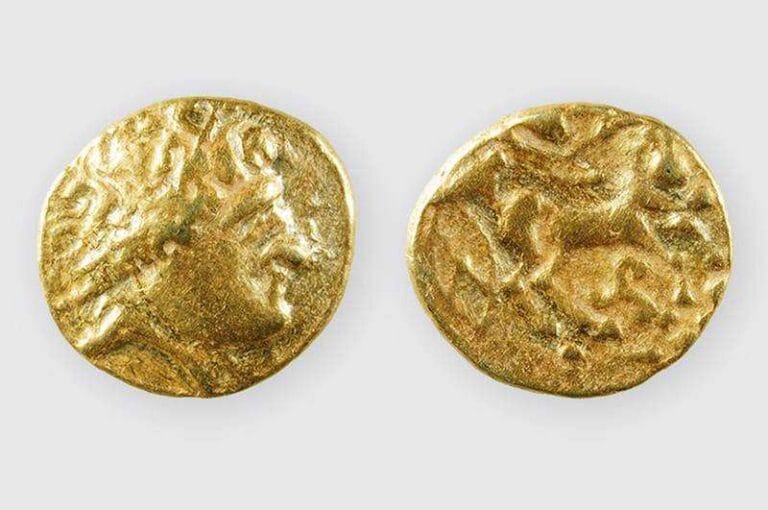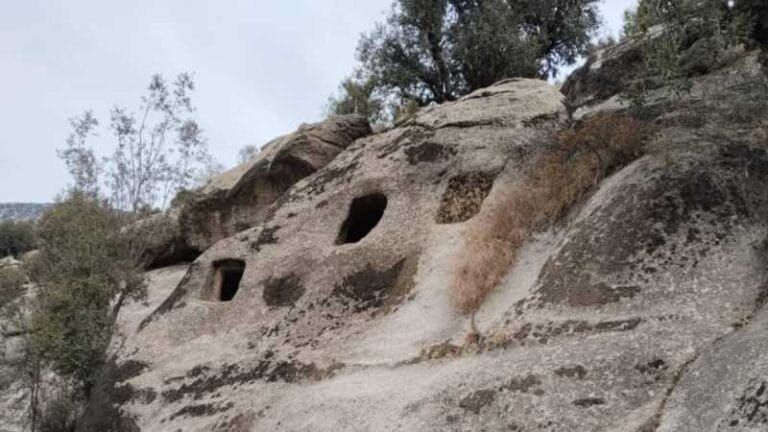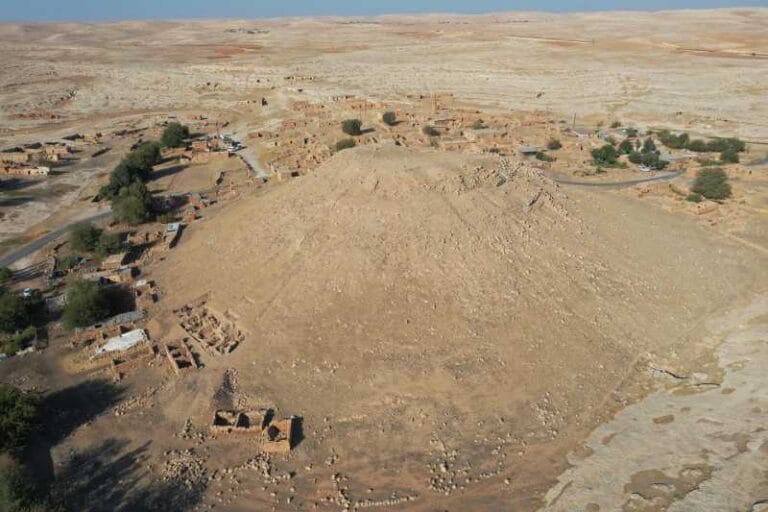Discovery of burial of a woman from the elite 5,000 years ago in Peru.
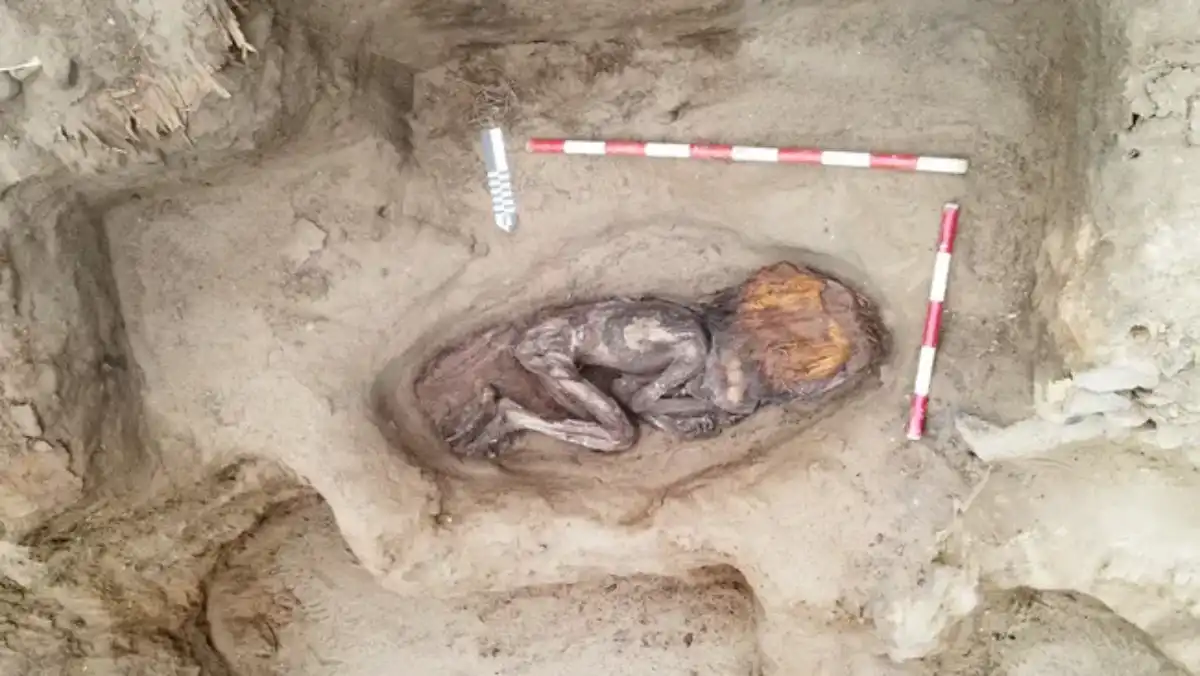
An impressive discovery in Peru revealed the remains of an elite woman buried with unique burial objects — among them, artifacts made from the beak of a toucan and macaw feathers.
According to the Ministry of Culture of Peru, the woman lived between 3000 and 1800 BC, at the height of the Caral civilization, considered the oldest in the Americas. Her body, surprisingly well preserved, was found in the ruins of the ancient city of Áspero, located just 700 meters from the Pacific Ocean. Wrapped in cotton fabrics, bundles of plant fibers, mats, and nets, her skin, hair, and nails were almost intact — something rare in a region where discoveries are usually limited to bones.
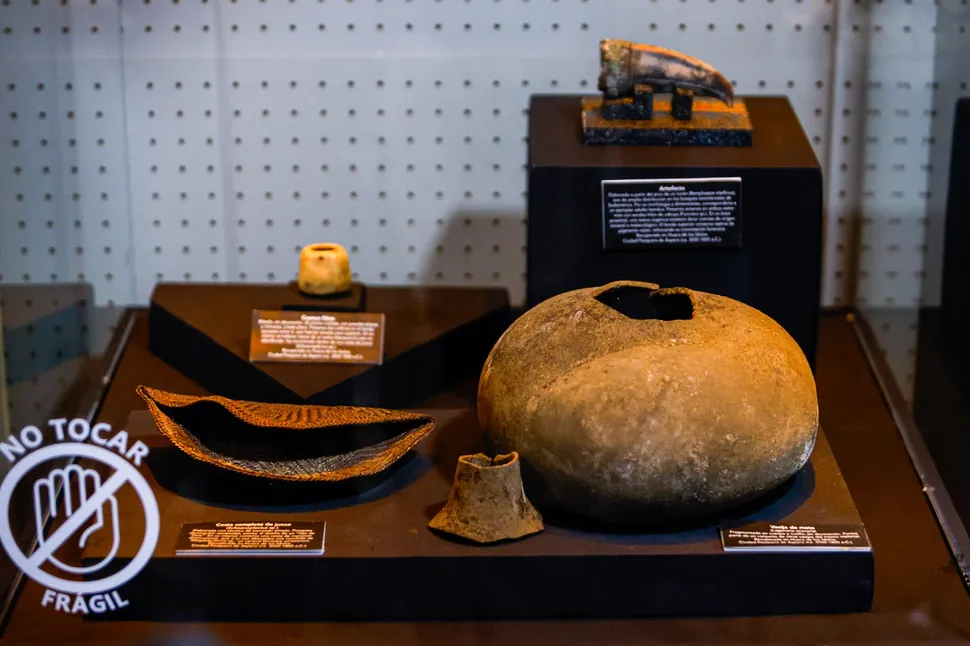
The woman, who was between 20 and 35 years old when she died, was buried with an impressive collection of items: an embroidered panel with macaw feathers, a piece with a toucan beak inlaid with green and brown beads, an Amazonian snail shell, about 30 sweet potatoes, and a fishing net. The wealth of the artifacts reinforces the idea that she held a high status in society.
Caral, the civilization to which she belonged, became famous for its pyramids, temples, and complex cities, and the archaeological site of Caral-Supe — the 526-hectare sacred city — is recognized by UNESCO as a World Heritage Site. This civilization brought urban life to the region on an unprecedented scale in the Americas.
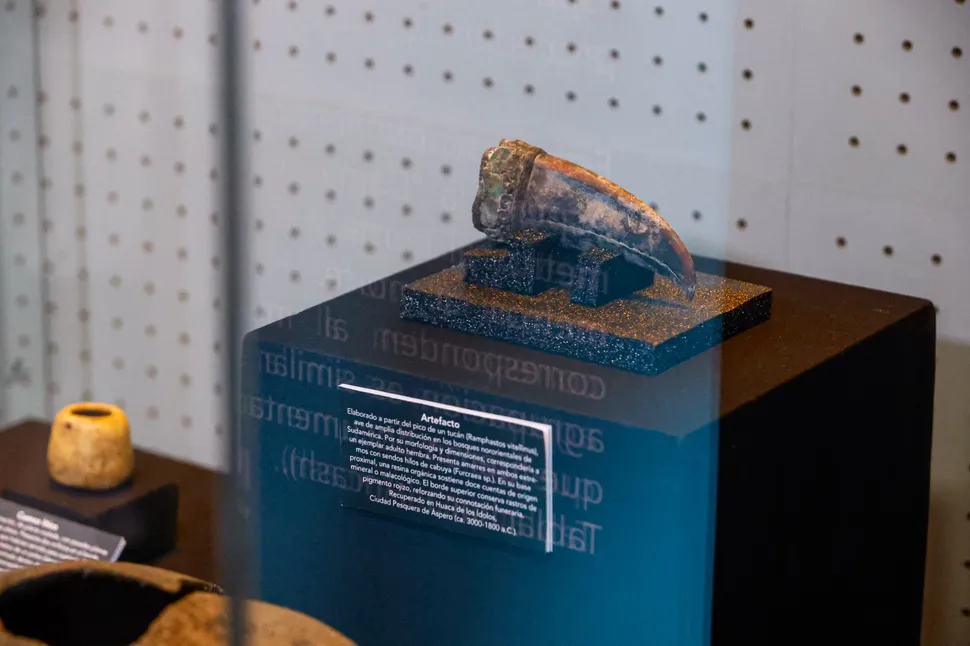
At the same Áspero, previous excavations revealed other women of high status, such as the ‘Lady of the Four Tupus,’ discovered in 2016, who was buried with brooches carved in the shape of birds and monkeys — symbols of prestige in a society where, despite the absence of writing, archaeologists can trace female power through the objects found.
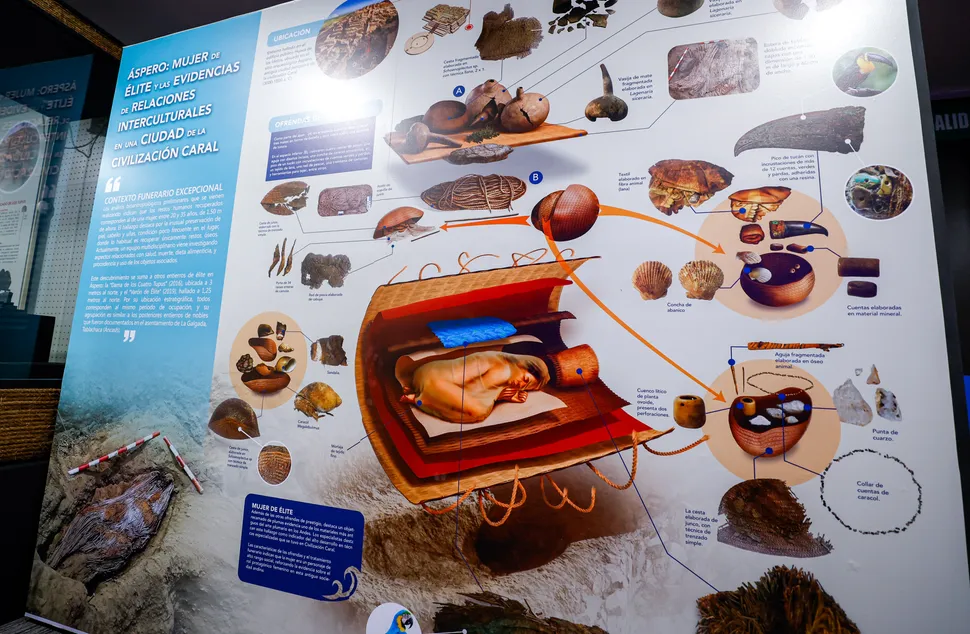
Caral did not have a known writing system, which means scholars do not know the names or titles of its people. Therefore, they have to rely on archaeological findings to understand how these populations lived. The historical names of Caral and Áspero are also unknown.
Currently, the team continues to study the body and funeral artifacts to uncover more details about the woman’s health, diet, and cause of death. With excavations at Áspero having already surpassed two decades, new discoveries are surely on the way, shedding more light on this enigmatic chapter of human history.

